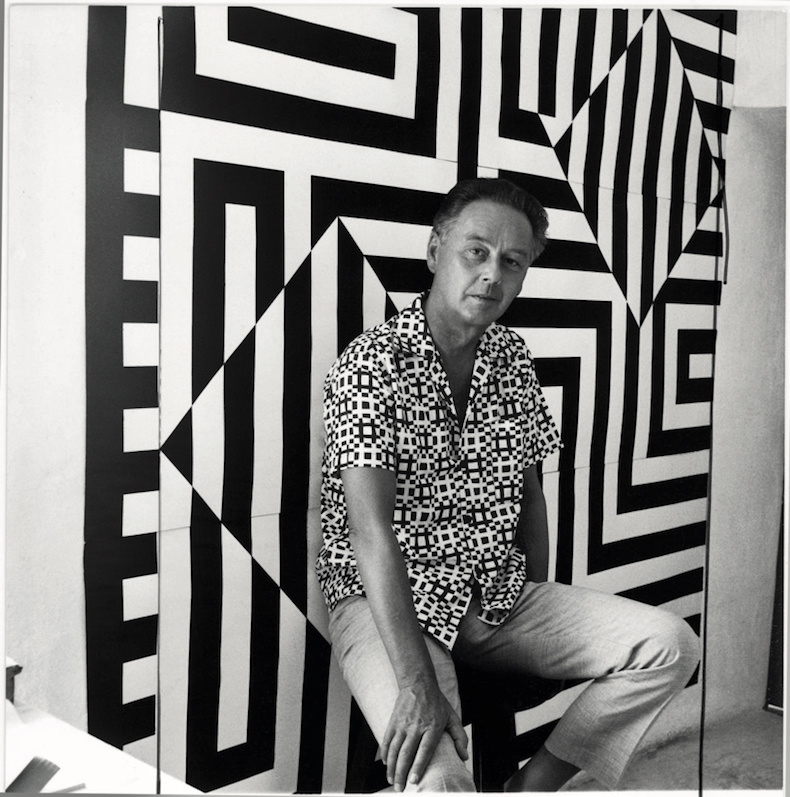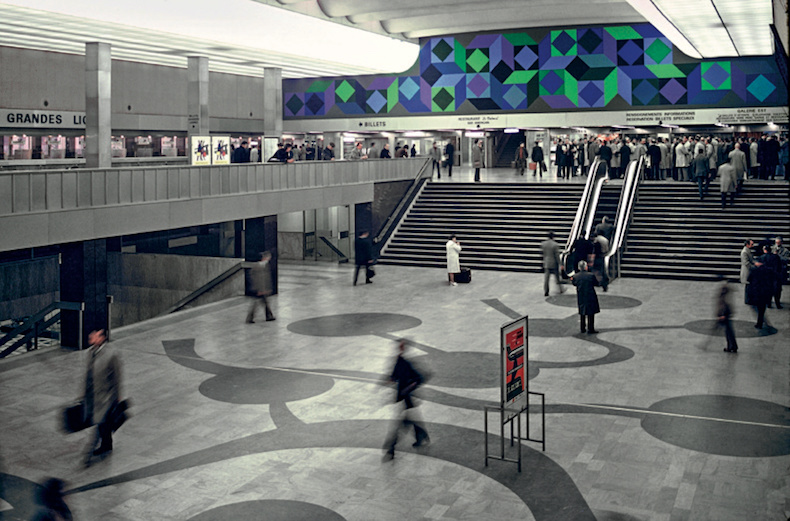
Victor Vasarely was strongly influenced by the Bauhaus Movement in Europe

Victor Vasarely was artistically trained in the wake of the Bauhaus movement in Hungary, and after leaving for France in 1930, continued to experiment, inspired by science fiction. In Paris he worked as a graphic designer in advertising, but then devoted himself fully to art after the war, producing many complex paintings.
Vasarely's abstract style, based on his observation of reality which also included the quirks and disorders of vision leading to optical kinetic art, based on the scientific process of distortion of images, the basis of Op-Art already mentioned. After the 1950s, his work was fully rooted in the scientific, economic and social context of the 1960s where Vasarely also endeavoured to change the aspect of architecture and television decor. Vasarely had developed a formal language based on six simple geometric forms encrusted in squares of pure colour which changed the aspect of all his paintings, architectural draft drawings or sculptures. Afterwards, his artistic language also included variations of these coloured squares which heralded the coming of digital art. A large mural of his work is still to be found at Gare Montparnasse in the 15th arrondissement of Paris.
As visitors will notice the exhibition follows a chronological and thematic path, rendering it easier for all to grasp the importance of Vasarely in art. In addition to presenting a large range of works, of which many have not been shown for fifty years, the exhibition also reveals the influence of Vasarely's art in the popular culture of his era and also includes one tapestry.
Sharing Forms include the following :
Michael Bouthier, responsible for contemporary collections, Musée d'Art Moderne, Paris,
Arnaud Pierre, Professor of Contemporary Art History, La Sorbonne,
assisted by Mathilde Marchand, researcher at Musée d'Art Moderne, Paris.
The curators brought out a paperback catalogue in French :
Vasarely, Le Partage des Formes, which will be available in the library of Centre Pompidou.















